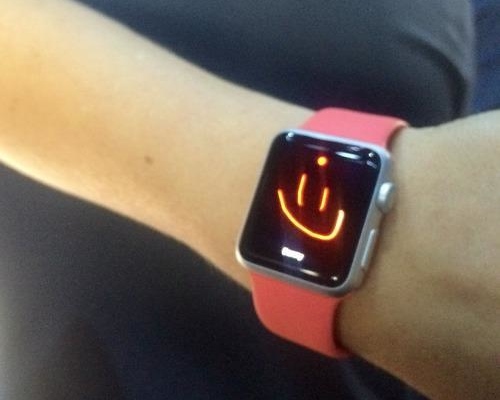
Un-Distracting By Distraction: The Apple Watch Paradox
When it comes to Apple Watch as notifications hub, I’ve always considered the solution to be based on the tenets of “ignoring is bliss.” In our daily mobile lives, we seem to be inundated with time-consuming, dismissible minutiae that, for whatever attention span-severing reason, we’re not actually able to dismiss. And even when we are, we don’t dismiss it as quickly as we — or those around us — would prefer. It’s a problem of information overload, and solving it is a profound irony that Apple seems utterly unwilling to openly expound. They started it, they iPhoned it in. And now they’re trying to fix it on their watch.
With Apple Watch.
For me, this comes with the wearable’s ability to be an “un-distraction,” to customize notifications in a way that iPhone can’t. Indeed, one of the things I’m most looking forward to is the way Apple Watch will necessitate the exponential increase in specificity of our notification options across all compatible apps and system-level services. Maybe we’ll be able to tailor news updates with keywords, where only a certain category gets through to our wrists. Maybe we’ll be able to receive only those Facebook updates and tweets from friends and followers of our choosing, but with further filters based on selected content or time (or even geolocation or “mood”). Maybe we’ll be able to have different “silent” settings for different contacts running concurrently to one another, where Best Friend Dave can’t wake you up at 3:00 AM, but Best Wife Jackie can. We’ll be able to play favorites with our favorites.
And that’s one of my favorite things.
But there’s another way that information overload might be mitigated, and, counterintuitive as it seems, that’s by letting distractions break through their own ceilings. There are those who won’t use Apple Watch as a bottleneck, opting instead to use it more like a wide mouth can. They will open the floodgates. But they’ll expect the same effective outcome.
I had a chat with one such user, and he explained away my skepticism thus:
I have heard all about how the Watch will let you limit your notifications to the most important stuff. People Expect that. What I have not heard anyone say is: “I’ll be willing to allow for more notifications.”
An example would be something you don’t need at all, like a push from ESPN telling you that LeBron had a triple double and the Cavs won. If I was out to dinner with family and got a vibration for that alert, I’d pull out my phone and be like, “[censored], who gives a [very censored]!”
But if it was on my wrist and I didn’t do anything as it just caught my eye, that’s like if I was walking past the bar in a restaurant and overheard a TV commentator saying it. No big deal. I have some useless knowledge about something I am somewhat interested in, but I didn’t have to waste my time or — worse — ignore the alert completely and wonder what it was. I like the idea of passive information.
I’m going to turn on all the notifications.
This isn’t the first apparent Apple Watch paradox to get my attention (I’ve called it the “tether that untethers” in the past), but it’s a compelling one. And while it won’t be the optimal solution for everyone (myself included), the sort of hyperawareness that Cupertino’s wearable might optionally engender is bound to suit a wide variety of users. It’s something that goes against all my personal expectations of the merit of Apple Watch and wearables in general, but it strikes me as undeniably remarkable that a single device can embody two wholly disparate communications and technology philosophies. It’s a very difficult thing to strike that balance, and Apple looks like they have a decided edge in setting the standard.
